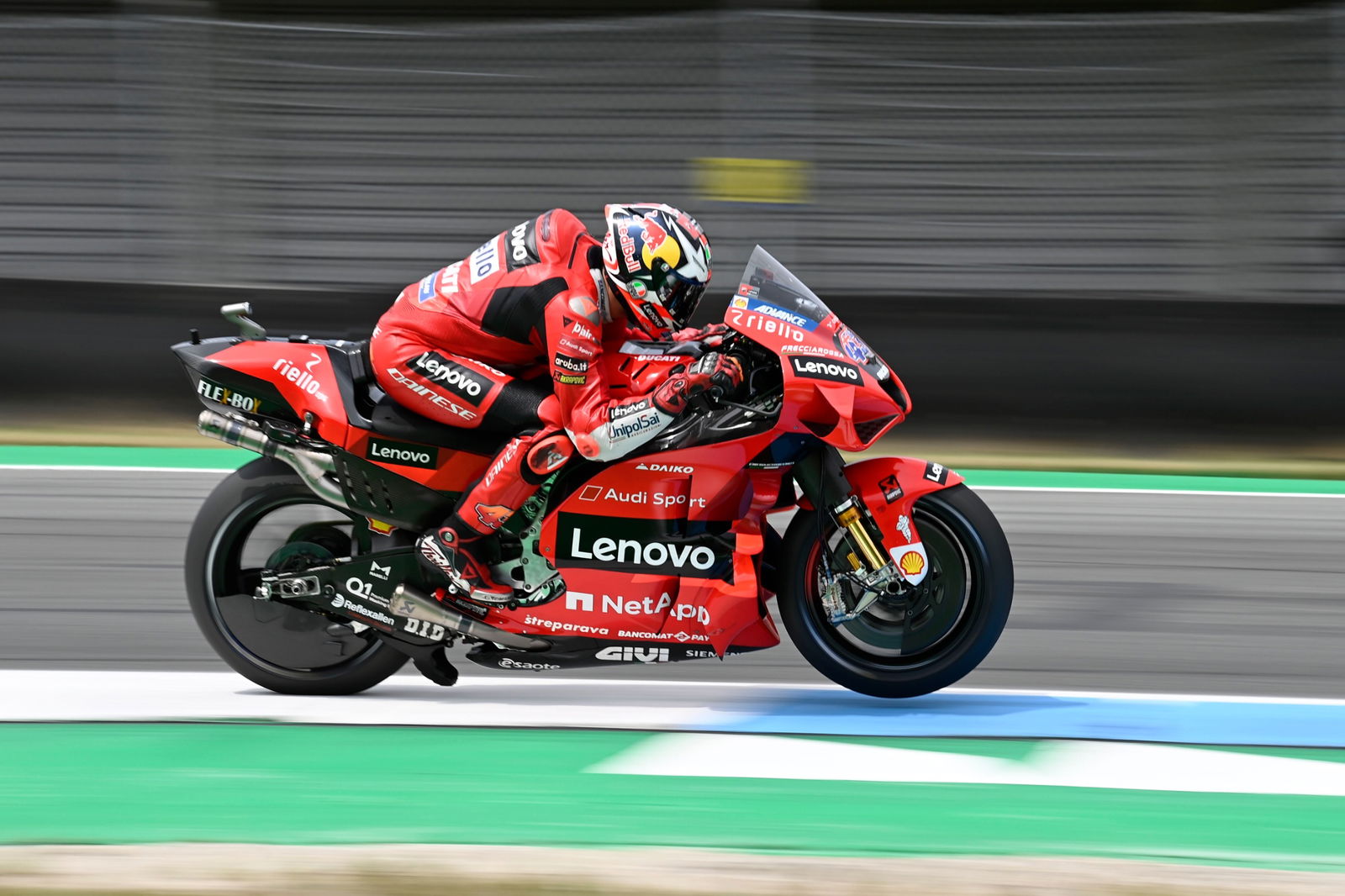Rins: Suzuki losing up to 0.4s per lap without rear MotoGP ride-height device

With the Covid technical freeze not reaching a complete thaw for MotoGP's non-Concession manufacturers until the end of this season, opportunities are limited to make a significant technical step for the remainder of 2021.
A notable exception is Suzuki which, while joining the other manufacturers in having a front holeshot device, is currently the only manufacturer without a rear ride-height system.
While the front is only used once, at the race start, the rear is more significant since it can be repeatedly activated over a lap, helping to counter wheelies under hard acceleration onto a long straight.
Just how significant is it?
"Suzuki calculate in every track," said Alex Rins. "For example, in Sachsenring we were losing 0.4 seconds. And here [Assen], I don't know exactly, [we think] we are losing 0.3."
"It depends on the track," he added. "For example, in Qatar without this rear device, for sure on the straight the others were taking like 0.3, 0.4 seconds.
"In Sachsenring we felt it in the race and looking from the helicopter camera you can appreciate that the others were going away from Joan and me, we had no chance to overtake the rider in front.
"But, for example in Mugello there was less difference."

To put those predications into perspective, removing the theoretical 0.4s a lap from Rins' Sachsenring qualifying time would have moved him from 11th to 5th on the grid.
Instead of starting 17th in Germany, team-mate and reigning champion Joan Mir would have joined Rins in progressing into Qualifying 2 and a certain top 12 start.
Apply a 0.3s deduction to Assen and Rins would move from 7th to 4th on the grid for the Dutch TT, with Mir advancing from 10th to 6th.
Given that qualifying and overtaking are among the main weaknesses for the GSX-RR, it's easy to see why the riders are pushing so hard to have the device.
"First of all, we must work to have the rear device as soon as possible, to have the same tools as the others," said Mir.
The device is already under development in Hamamatsu, but when will it appear? The good news is that Rins and Mir shouldn't have much longer to wait, although whether it will instantly be a match for the cutting-edge systems used by the likes of Ducati remains to be seen.
"It's been a long time that we have been asking for this rear device," Rins confirmed. "For sure Suzuki is working hard, but they want to bring things when they are sure they are working well.
"Theoretically, they will bring it for the second race in Austria. So I think [test rider Sylvain Guintoli] will try it before that, or otherwise Tsuda, the Japanese test rider, in Japan.
"It's not easy when everybody [else] is using these new items and we are a little bit late. But our bike is working well [without it], so this is the important thing also."
Although Suzuki has not won a race so far this season, Mir has taken three podiums and holds fourth in the world championship, although a formidable 55 points behind Fabio Quartararo's Yamaha.
Rins, although out-qualifying Mir in seven of the eight events they have both attended, suffered a nightmare run of four successive race accidents then a wrist fracture while on his bicycle in Catalunya, leaving him 14th.
The opening Red Bull Ring round marks the end of the summer break on August 8 with the second event, where the Suzuki rear ride-height device could make its debut, the following weekend.


